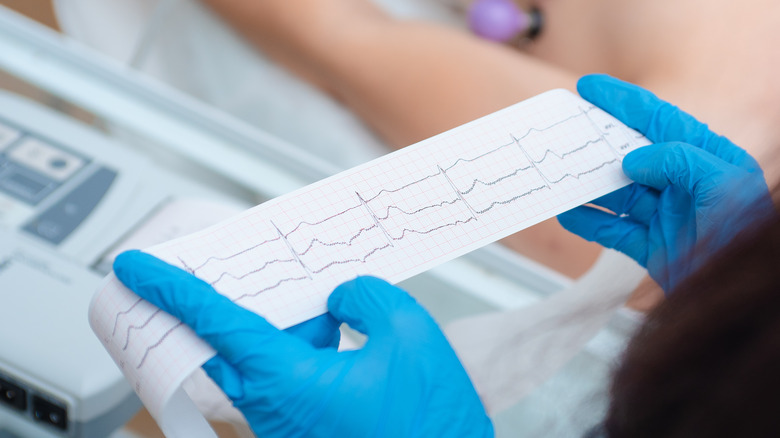How Is Pericarditis Treated?
Pericarditis is a type of heart disease caused by an inflammation of the pericardium, which is the thin sac-like membrane around the heart, per WebMD. The pericardium helps lubricate the heart and allows it to move smoothly within the chest cavity, per Healthline. Keep in mind, there are different types of pericarditis. Acute pericarditis, for starters, typically develops suddenly but improves over time, according to the Mayo Clinic. Chronic pericarditis, on the other hand, develops gradually and may last a few months.
In some cases, pericarditis can lead to complications, such as pericardial effusion — the build-up of fluid in the pericardial sac. The fluid can compress the heart and make it difficult to swallow or breathe while lying down, explain the experts at Healthline. Pericarditis can also lead to a serious complication called cardiac tamponade, which is a life-threatening condition that occurs when blood or fluid builds up in the pericardium and compresses the heart.
The main causes and symptoms of pericarditis
There are several causes of pericarditis, including autoimmune diseases, medications, and bacterial infections, among others, according to the Cleveland Clinic. In fact, streptococcus pneumoniae is typically the most common cause of bacterial infections associated with pericarditis, according to a 2013 study published in the Baylor University Medical Center Proceedings.
Autoimmune diseases, such as lupus and rheumatoid arthritis, can also lead to pericarditis (via the Cleveland Clinic). Other common causes include trauma to the chest, such as a car accident or a fall, and side effects of certain medications. In some cases, the root source of the condition is cancer that has spread to the pericardium.
Some symptoms of pericarditis include chest pain, which is usually sharp and located on the left side of the chest or the back of the breastbone and is often worse when lying down, breathing deeply, or coughing (per Mayo Clinic). Other symptoms can consist of fever, coughing, fatigue, and swelling in the legs.
Treatment
The treatment for pericarditis depends on the underlying cause and severity of the condition, as per the Mayo Clinic. The first line of treatment for acute pericarditis is typically aspirin or non-steroidal anti-inflammatory drugs (NSAIDs), such as ibuprofen (via the Cleveland Clinic). In some cases, corticosteroids may be prescribed to reduce inflammation, explains Mayo Clinic.
If pericarditis is due to a bacterial infection, antibiotics will be prescribed to treat the underlying infection. However, if the cause is cancer or another underlying medical condition, other treatment options will focus on addressing the underlying condition. For example, when there's a build-up of fluid in the pericardial sac, the fluid may need to be drained through a procedure called pericardiocentesis.
Therefore, it's important to see a doctor if you have symptoms of pericarditis, as early diagnosis and treatment can help prevent complications. To diagnose pericarditis, your doctor might perform a physical examination and order various tests, including an electrocardiogram (ECG), a chest X-ray, or a computed tomography (CT) scan.



